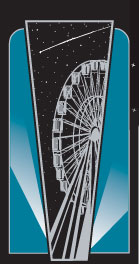 |
 |
Answers to The
East Corridor’s most frequently asked questions are provided here.
Questions will be updated as necessary.
1. Why is this
study being done?
TxDOT has initiated The East Corridor
Transportation Study to develop a plan of action to best meet the
transportation needs for the IH 30/US 80 corridors in eastern Dallas
county both now and for the future. In recent years, population growth in
Dallas, and many of the eastern suburban cities, has greatly increased
transportation demand. By 2030, the population of Dallas County is
projected to double from 2000 levels. The study will address area mobility
for the next 25 years, as well as today's traffic congestion.
2. When will the study be completed?
Initiated in
May 2004, this transportation study is approximately a three-year project.
Preliminary Design Schematics and a corresponding Environmental Assessment
will be completed by fall 2007.
3. When will any recommended
highway construction begin?
Typically, the lead-time for major
highway improvements (from MIS to the beginning of construction) is 10
years or more, depending on funding availability. After the design
schematics and environmental documentation are complete, the process of
developing detailed construction plans and estimates must occur before
securing funding and awarding the construction contract.
4.
Will TxDOT need to acquire additional property for highway
improvements?
If so, when will property owners know if their property
will be impacted?
TxDOT's goal is to minimize the need for
property acquisition. However, it is likely additional property will be
required to some extent within the corridor, although it could range from
limited areas in specific locations to more extensive impacts along other
sections of the corridor. The analysis of each potential alternative will
include an evaluation of right-of-way requirements and potential
acquisition of existing property sites. This information will be presented
at Community Work Group Meetings, Public Meetings/Hearings for citizen
input and feedback.
5. What is a "locally preferred
alternative?"
The result of the Transportation Study will be
the selection of a locally preferred alternative. This is the consensus
recommendations endorsed by governing bodies of the local
entities/towns/cities located within the study corridor.
6. Why
were new HOV lanes implemented along IH 30 and US 80 prior to the
completion of this transportation study?
DART and TxDOT
installed an interim HOV lane along IH 30 from downtown Dallas to US 80.
This is a temporary HOV lane designed to provide immediate congestion
until permanent, more all-inclusive and functional design solutions are
explored, adopted and implemented.
7. Will sound walls be
constructed to reduce the impact of highway noise on adjacent
neighborhoods?
Studies will include analysis of environmental
factors, including noise and air quality. In some areas, sound walls may
be needed to help mitigate noise levels that negatively impact adjacent
neighborhoods. If study results conclude that a particular sound wall is
warranted, property owners located immediately adjacent to the sound wall
are the sole determining party if, in fact the wall is constructed because
sound walls have both advantages and disadvantages for adjacent property
owners.
8. Does the study scope include mass transit
options?
The East Corridor , previously studied by DART, did
include investigation of a full range of multi-modal strategies and
recommendations to develop mass transit solutions. Keep in mind however
that a number of eastern Dallas County cities/towns have chosen not to be
the DART service for mass transit consideration. Future consideration and
expansion of mass transit services including buses (local and express),
light rail, and park and ride facilities remains a DART/local
participating community decision.
9. Will a "no-build" or
“do-nothing” option be considered?
Yes, the study will include
an impact analysis on area mobility and congestion if no
federally/state-funded long-range transportation improvements are
funded/implemented for IH 30 and US 80 in eastern Dallas and Kaufman
Counties. This alone makes consensus critical when considering design
solutions and weighing options to improve or not improve travel conditions
by solving congestion for local cities, towns, and communities.
10. Could IH 30 and/or US 80 be tolled in the future?
In Texas, current identified transportation needs exceed available
funding by three to one. Traditional, tax-based methods of financing roads
are no longer sufficient to handle the statewide and local transportation
needs in a timely fashion. The future depends on funding tools that
maximize budgets by using strategic partnerships with local communities
and private businesses. In the past, Texas highways have been funded by a
combination of federal, state and local funds. In the future, the IH 30
and US 80 facilities will be considered candidates for future
toll-incorporation.
For more information on future
toll-incorporation on Texas roads, please visit the Texas Department of
Transportation website at: http://www.dot.state.tx.us.
|
 |























